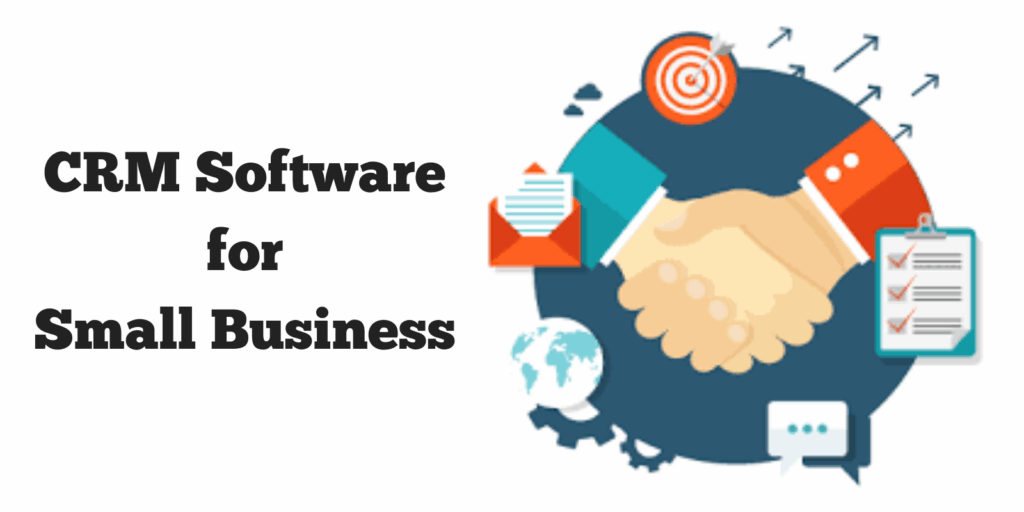
In the dynamic world of small business, staying ahead of the curve is crucial. One of the most effective tools for achieving this is a Customer Relationship Management (CRM) system. But what exactly is CRM, and why is it so vital for small business sales? This comprehensive guide will delve into the intricacies of CRM, its benefits, how to choose the right one, and how to implement it successfully to boost your sales performance. We’ll explore everything from the basic functionalities to advanced strategies, ensuring you have all the knowledge you need to make an informed decision.
What is CRM? Demystifying the Concept
At its core, CRM is a technology-based solution designed to manage and analyze customer interactions and data throughout the customer lifecycle. It’s not just about storing contact information; it’s about understanding your customers, their needs, and how they interact with your business. A good CRM system centralizes all customer-related information in one place, providing a 360-degree view of each customer.
Think of it as a digital hub for all your customer interactions. This includes:
- Contact Information: Names, addresses, phone numbers, email addresses.
- Interaction History: Records of all communications, including emails, calls, and meetings.
- Sales Data: Tracking of leads, opportunities, and closed deals.
- Marketing Campaigns: Information on which campaigns customers have interacted with.
- Support Tickets: Records of customer service inquiries and resolutions.
By consolidating this information, CRM empowers businesses to:
- Improve customer relationships
- Streamline sales processes
- Enhance customer service
- Drive sales growth
Why CRM is a Game Changer for Small Business Sales
For small businesses, every customer interaction counts. CRM can be the difference between merely surviving and thriving. Here’s why it’s so important:
1. Improved Customer Relationships
CRM allows you to personalize your interactions with customers. By understanding their preferences, purchase history, and communication history, you can tailor your messaging and offers to resonate with each individual. This level of personalization fosters stronger relationships, increases customer loyalty, and ultimately leads to repeat business.
2. Streamlined Sales Processes
CRM automates many of the tedious tasks involved in sales, such as data entry, lead tracking, and follow-up reminders. This frees up your sales team to focus on what they do best: building relationships and closing deals. Automation reduces the risk of errors and ensures that no leads fall through the cracks.
3. Enhanced Customer Service
With a CRM system, your customer service team has instant access to all relevant customer information. This allows them to quickly resolve issues, provide personalized support, and anticipate customer needs. Happy customers are more likely to become loyal customers.
4. Increased Sales and Revenue
By improving customer relationships, streamlining sales processes, and enhancing customer service, CRM directly contributes to increased sales and revenue. CRM helps you identify and nurture leads, track opportunities, and close deals more efficiently. It also provides valuable insights into your sales performance, allowing you to make data-driven decisions to optimize your sales strategy.
5. Better Data Insights
CRM provides valuable insights into your sales and marketing efforts. You can track key metrics such as lead conversion rates, sales cycle length, and customer lifetime value. This data helps you identify areas for improvement and make informed decisions to optimize your strategies.
Key Features to Look for in a CRM for Small Business
Choosing the right CRM system can be overwhelming, given the wide variety of options available. However, some key features are essential for any small business looking to improve its sales performance:
1. Contact Management
At the heart of any CRM system is contact management. This feature allows you to store and organize all your customer data, including contact information, communication history, and purchase history. Look for a system that offers easy data entry, search functionality, and the ability to segment your contacts based on various criteria.
2. Sales Automation
Sales automation features streamline your sales processes by automating repetitive tasks. This includes lead tracking, opportunity management, email automation, and task management. By automating these tasks, you can free up your sales team to focus on building relationships and closing deals.
3. Lead Management
Lead management features help you track and nurture leads throughout the sales cycle. This includes lead capture, lead scoring, and lead nurturing. A good lead management system helps you identify qualified leads and prioritize your sales efforts.
4. Reporting and Analytics
Reporting and analytics features provide valuable insights into your sales performance. This includes sales dashboards, sales reports, and the ability to track key metrics such as lead conversion rates, sales cycle length, and customer lifetime value. These insights help you make data-driven decisions to optimize your sales strategy.
5. Integration with Other Tools
Choose a CRM system that integrates with the other tools you use, such as email marketing platforms, social media platforms, and accounting software. Integration streamlines your workflows and ensures that all your data is in one place.
6. Mobile Accessibility
In today’s mobile world, it’s essential to have a CRM system that is accessible on the go. Look for a system that offers a mobile app or a responsive web design that allows you to access your data and manage your sales activities from your smartphone or tablet.
7. User-Friendly Interface
A user-friendly interface is crucial for user adoption. Choose a system that is easy to navigate and understand, with a clean and intuitive design. This will ensure that your team can quickly learn how to use the system and take full advantage of its features.
8. Scalability
As your business grows, your CRM system should be able to scale with you. Choose a system that can accommodate your growing data volume and user base. Consider whether the system offers different pricing plans that align with your evolving needs.
Top CRM Systems for Small Businesses (and Why They Work)
Selecting the right CRM can feel daunting. Here’s a look at some of the top contenders, each with its unique strengths:
1. HubSpot CRM
HubSpot CRM is a popular choice for small businesses, and for good reason. It’s free to use, incredibly user-friendly, and offers a wide range of features, including contact management, sales automation, and lead tracking. Its integration capabilities are also a major plus, connecting seamlessly with other marketing and sales tools.
Why it works: Its free plan is robust enough for many small businesses to get started, and its ease of use makes it simple to adopt.
2. Zoho CRM
Zoho CRM is a comprehensive CRM solution that offers a range of features, including sales automation, marketing automation, and customer service tools. It’s known for its affordability and its ability to customize the system to fit your specific needs.
Why it works: It’s highly customizable and offers a wide range of features at a competitive price point.
3. Salesforce Sales Cloud
Salesforce Sales Cloud is a powerful CRM solution that is ideal for businesses of all sizes. It offers a wide range of features, including sales automation, lead management, and reporting and analytics. While it can be more complex than other options, its scalability and advanced features make it a strong contender for growing businesses.
Why it works: Its robust features and scalability make it a good long-term investment, even for small businesses with growth plans.
4. Pipedrive
Pipedrive is a sales-focused CRM that is designed to help sales teams manage their deals and close more sales. It offers a visual interface that makes it easy to track your sales pipeline and manage your sales activities.
Why it works: Its focus on sales and visual pipeline management makes it ideal for sales-driven businesses.
5. Freshsales
Freshsales is a CRM that is part of the Freshworks suite of products. It offers a user-friendly interface, sales automation features, and integration with other Freshworks products, such as Freshdesk for customer service.
Why it works: It offers a clean interface and integrates well with other Freshworks products.
Implementing CRM: A Step-by-Step Guide for Small Businesses
Successfully implementing a CRM system requires careful planning and execution. Here’s a step-by-step guide to help you get started:
1. Define Your Goals and Requirements
Before you start, define your goals for implementing a CRM system. What do you want to achieve? Increase sales? Improve customer satisfaction? Streamline your sales processes? Understanding your goals will help you choose the right CRM system and tailor it to your specific needs. Also, identify the specific features and functionalities you need.
2. Choose the Right CRM System
Research and compare different CRM systems, considering your goals, requirements, and budget. Take advantage of free trials to test out different systems and see which one best fits your needs. Consider the factors mentioned above, such as contact management, sales automation, lead management, reporting and analytics, integration, mobile accessibility, user-friendliness, and scalability.
3. Plan Your Implementation
Develop a detailed implementation plan that outlines the steps you will take to implement the CRM system. This should include data migration, system configuration, user training, and a timeline for implementation. Consider the team members who will be involved and their respective roles.
4. Migrate Your Data
Migrate your existing customer data into the CRM system. This may involve importing data from spreadsheets, databases, or other systems. Ensure that your data is accurate, clean, and organized. Data quality is crucial for the success of your CRM implementation.
5. Configure the System
Configure the CRM system to meet your specific needs. This may involve customizing fields, creating workflows, and setting up integrations with other tools. Take time to explore all the system’s settings and options.
6. Train Your Team
Train your team on how to use the CRM system. This should include both basic and advanced features. Provide ongoing support and training to ensure that your team is able to use the system effectively. User adoption is key to the success of your CRM implementation.
7. Test and Refine
Test the CRM system to ensure that it is working as expected. Identify any issues and make necessary adjustments. Continuously refine your implementation based on feedback from your team and your own experience. Iterate and improve.
8. Monitor and Evaluate
Monitor your CRM system’s performance and evaluate its effectiveness. Track key metrics such as lead conversion rates, sales cycle length, and customer satisfaction. Use these insights to make data-driven decisions and optimize your CRM strategy. Regularly review your implementation to ensure that it continues to meet your needs.
Common Pitfalls to Avoid in CRM Implementation
Even with careful planning, CRM implementation can face challenges. Being aware of these pitfalls can help you avoid them:
1. Lack of Clear Goals
Without clear goals, it’s difficult to choose the right CRM system and measure its success. Define your goals upfront and ensure they align with your business objectives.
2. Poor Data Quality
Garbage in, garbage out. Poor data quality can lead to inaccurate reporting, ineffective marketing campaigns, and frustrated sales teams. Invest time in cleaning and organizing your data before migrating it to your CRM system.
3. Lack of User Adoption
If your team doesn’t use the CRM system, it won’t deliver the expected results. Provide adequate training, support, and encouragement to ensure that your team embraces the system. Make sure the system is user-friendly and meets their needs.
4. Over-Customization
Resist the urge to over-customize the CRM system. This can lead to complexity, maintenance challenges, and integration issues. Start with the core features and customize only when necessary.
5. Ignoring Integration
Failing to integrate your CRM system with other tools can lead to data silos and inefficient workflows. Choose a CRM system that integrates with the tools you already use or plan to use in the future.
6. Not Tracking Key Metrics
Without tracking key metrics, you won’t be able to measure the success of your CRM implementation. Define your key metrics upfront and regularly monitor them to identify areas for improvement.
7. Neglecting Ongoing Training and Support
CRM systems evolve, and your team’s needs may change. Provide ongoing training and support to ensure that your team can use the system effectively and stay up-to-date with new features.
Maximizing CRM for Sales Success
Once your CRM system is up and running, you can take several steps to maximize its impact on your sales success:
1. Use Data to Personalize Sales Efforts
Use the data in your CRM to personalize your sales interactions. Tailor your messaging, offers, and follow-up activities to each customer’s individual needs and preferences. Personalization can significantly increase your conversion rates and customer loyalty.
2. Automate Sales Processes
Automate repetitive tasks such as lead nurturing, follow-up reminders, and email campaigns. This frees up your sales team to focus on building relationships and closing deals. Automation can also improve the consistency and efficiency of your sales processes.
3. Implement a Sales Pipeline
Use your CRM system to create and manage a sales pipeline. This will help you track your leads, opportunities, and deals through the sales cycle. A well-defined sales pipeline can improve your sales forecasting and help you identify areas for improvement.
4. Leverage Lead Scoring
Implement lead scoring to prioritize your sales efforts. Assign scores to your leads based on their behavior, demographics, and engagement. This will help you identify the most qualified leads and focus your sales efforts on those leads.
5. Track and Analyze Sales Performance
Regularly track and analyze your sales performance using the reporting and analytics features of your CRM system. Identify key metrics such as lead conversion rates, sales cycle length, and customer lifetime value. Use these insights to make data-driven decisions and optimize your sales strategy.
6. Integrate with Marketing Automation
Integrate your CRM system with your marketing automation platform to create a seamless customer experience. This will allow you to track customer behavior and personalize your marketing campaigns. Integration can also improve the alignment between your sales and marketing teams.
7. Encourage Team Collaboration
Encourage collaboration among your sales team by sharing information and best practices in the CRM system. This will help your team work together more effectively and improve their overall performance. Promote transparency and communication.
8. Continuously Refine Your Strategy
CRM implementation is an ongoing process. Continuously refine your strategy based on your performance data and feedback from your team. Experiment with new features and approaches to optimize your sales results. Stay adaptable and responsive to change.
The Future of CRM for Small Businesses
The CRM landscape is constantly evolving, with new technologies and features emerging all the time. Here are some trends to watch out for:
1. Artificial Intelligence (AI)
AI is already playing a significant role in CRM, and its influence will only grow. AI-powered CRM systems can automate tasks, provide personalized recommendations, and predict customer behavior. AI can help you optimize your sales and marketing efforts and improve your customer relationships.
2. Mobile CRM
Mobile CRM is becoming increasingly important, as more and more businesses rely on mobile devices. Look for CRM systems that offer a mobile app or a responsive web design that allows you to access your data and manage your sales activities from your smartphone or tablet.
3. Social CRM
Social CRM integrates social media data into your CRM system. This allows you to track customer interactions on social media and personalize your marketing campaigns. Social CRM can help you build stronger relationships with your customers and improve your brand awareness.
4. Enhanced Personalization
CRM systems are becoming more sophisticated in their ability to personalize customer interactions. This includes personalized content, offers, and recommendations. Personalization can significantly increase your conversion rates and customer loyalty.
5. Data Privacy and Security
Data privacy and security are increasingly important concerns. Choose a CRM system that offers robust security features and complies with relevant data privacy regulations. Protect your customer data and build trust with your customers.
Conclusion: Embracing CRM for Sustainable Growth
Implementing a CRM system is a significant investment, but it’s one that can pay huge dividends for small businesses. By centralizing your customer data, streamlining your sales processes, and improving your customer relationships, CRM can help you increase sales, drive revenue, and achieve sustainable growth.
Remember to choose the right CRM system for your needs, plan your implementation carefully, train your team, and continuously monitor and evaluate your results. By embracing CRM, you can position your small business for success in today’s competitive marketplace.
The journey to CRM success is not always easy, but the potential rewards are well worth the effort. By taking a thoughtful approach to CRM implementation and continuously refining your strategies, you can transform your sales processes and build lasting relationships with your customers. So, take the leap, embrace the power of CRM, and watch your small business thrive!


